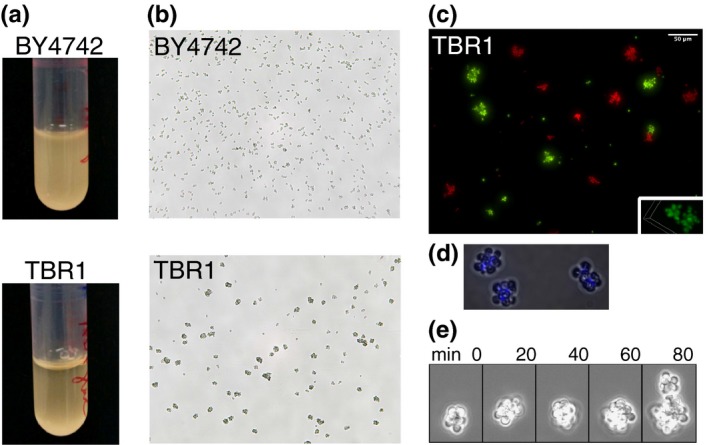Figure 1.

TBR1 cells form clumps by incomplete separation. (a) Settling patterns, 45 min after shaking. Yeast cells were kept in YPD and shaken overnight at 300 rpm at 30°C, moved to a static incubator for 45 min, and imaged. (b) Nonclumping laboratory strain BY4742 (top) and clumpy TBR1 strain (bottom) imaged on a Nexcelom Cellometer M10 at 10× magnification. (c) Lack of aggregation in TBR1. Two samples of the same TBR1 strain were tagged with the yEGFP and mCherry reporters expressed from the GAL1 promoter. An initially 1:1 mixture was resuspended daily in appropriate SD medium for auxotroph selection + galactose. After 7 days, clumps were either purely red (n = 205) or green (n = 129), indicating lack of aggregation (Nikon TE2000, 20×). Isolated single cells (single or in doublets) were also present (n = 414 red; n = 461 green). Some other single cells overlapped with clumps (n = 35 green cells on red clumps; n = 14 red cells on green clumps). Small panel: confocal image, 60× magnification. (d) Calcofluor white stained bud necks in TBR1 indicate that clumps form from incomplete daughter cell separation, as opposed to aggregation. (e) Clump division: A TBR1 clump divides into two new clumps in static medium, without shaking. Images were taken 20 min apart in a Nikon Biostation CT, at 40× magnification. The TBR1 clump grows over 60 min as new daughter cells remain attached. At 80 min, a small clump (on top) breaks off from the larger parent clump
